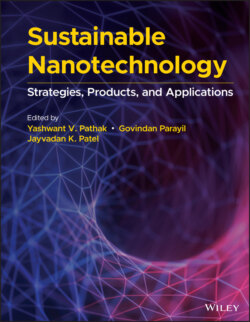Читать книгу Sustainable Nanotechnology - Группа авторов - Страница 36
1.4.3.3 Energy Storage
ОглавлениеSustainability of energy includes more than just safe production and conversion; being able to store it for later use is quite important. Nanotechnology’s influence in energy storage can make it a safe and cost‐effective process in addition to sustainability. The simplest form of energy storage and one that most people are familiar with are batteries [114]. Most of the electronic devices that are used today are portable, which has increased the demand for an energy storage unit that is high density yet lightweight. This can be done by using nanocrystalline separator plates in batteries, which not only allow more storage of energy than conventional methods but also make the battery lightweight due to their foam‐like structure [115].
A safer alternative to fossil fuel‐generated energy is using hydrogen as an energy carrier. Hydrogen has shown the potential to hold a tremendous amount of energy and can be converted into other energy forms without releasing any harmful emissions. Various nanomaterials, especially carbon based, are good candidates for hydrogen storage due to their high absorbency, high specific area, pores, and low‐mass density [116]. Combination of single‐walled CNTs and BH₃ may work as a reversible hydrogen storage system and allow storage and release of hydrogen. This makes it optimal for hydrogen‐based fuel cells that could be used in vehicles.
